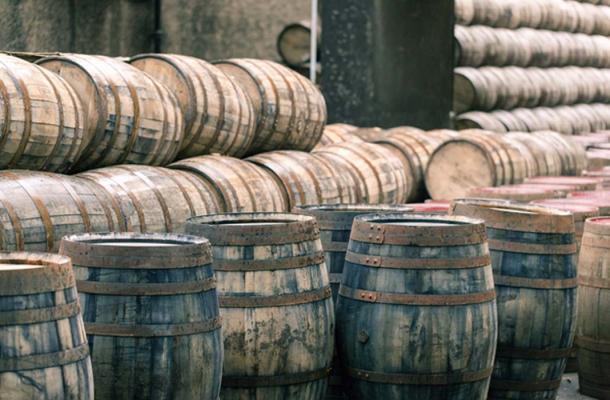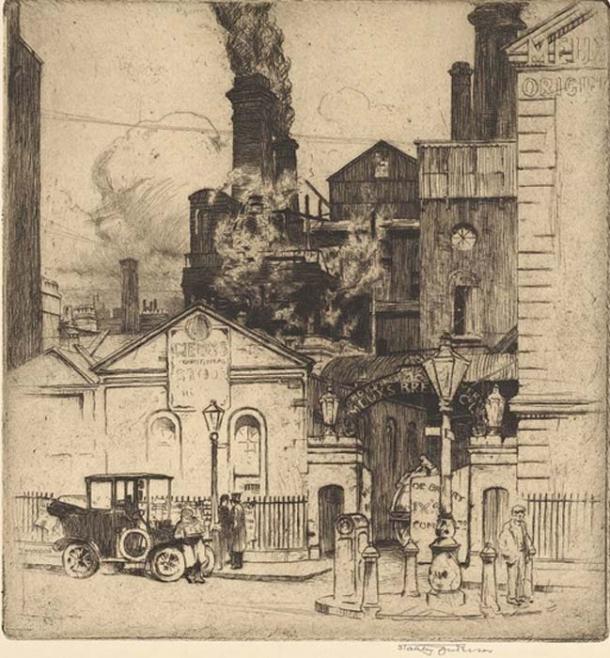The Great London Beer Flood That Drowned Eight People in Alcohol
The Great London Beer Flood of 1814 was one of the most bizarre and tragic industrial accidents in the history of London. This disaster occurred at a brewery on Tottenham Court Road which resulted in deluge of beer in the surrounding area, shattering houses and claiming the lives of eight people.
The London Beer Flood, sometimes referred to as the Great Beer Flood, occurred on the 17 th of October 1814. At the heart of this disaster was the Horse Shoe Brewery, which stood at the corner of Great Russell Street and Tottenham Court Road in St. Giles, in Central London, its address being 269 Tottenham Court Road. The brewer is recorded to have been founded before 1764 and was known as a major producer of porter.

The brewer was known as a major producer of porter. (Tommy Lee Walker / Adobe)
What Was the Cause of the London Beer Flood?
By 1810, the Horse Shoe Brewery was producing beer on an industrial scale. In that year, the proprietors of the brewery had a 22 feet (6.7 meters) high fermentation tank installed on its premises. This tank could hold up to 3500 barrels of beer and was the one that would trigger the London Beer Flood. During that period, the major breweries in London prided themselves on having the large fermentation vats. Incidentally, the tank that caused the flood was not even the largest one owned by the Horse Shoe Brewery. A contemporary writer claimed that the establishment had a tank that could hold up to 18,000 barrels of beer.
Such massive fermentation tanks were secured with sturdy iron rings, so as to prevent the build-up of pressure (due to the fermentation process) causing the vessels to explode. On the afternoon of the 17 th of October 1814, George Crick, a storehouse clerk, noticed that one of the hoops on the brewery’s 22 feet tank had slipped off. As this occurred two or three times a year, Crick did not worry too much about it. Moreover, Crick’s boss assured him that nothing bad would happen and instructed him to write a letter to another employee requesting the hoop be fixed at a later date.
- Archaeologist attempts to revive lost alcoholic beverages from ancient recipes and residues
- Why did pyramid builders remain in dangerous flood zone?
- Tragic Accident or Mass Murder? The Sinking of the White Ship leads to Disaster for England

Large fermentation vats used in the traditional way of making beer. (malajscy / Adobe)
About an hour after Crick made his observation, he heard an explosion come from the storeroom where the vat was. The blast had a domino effect, breaking several more tanks. Crick reported that between eight and nine thousand barrels of porter were lost. The wave of beer swept through the narrow alleys of the surrounding area and inundated the nearby slum of St. Giles Rookery. As the area did not have a drainage system, the beer had nowhere to go but into the underground cellars where the poor were living, thus flooding their homes. New Street was the area worst hit by the flood and most of the dead were from there.
The Victims of the London Beer Flood
The sources vary a little as to the identities of the eight victims of the London Beer Flood. Five (some sources have four instead) of the victims were mourners attending a wake for a two-year-old boy who had died the previous day. The victims were killed when the cellar where the wake was held was inundated by the beer. Another two victims were a mother and her three-year-old daughter, who had just settled for tea. Most sources state that both were killed, while others claim that only the child died. Another victim was a teenage servant who was washing pots at an outdoor pump behind the wall of the Tavistock Arms pub. The wall had collapsed on her, either from the force of the beer wave, or from the explosion of the tank. In some sources, a three-year-old girl is mentioned as the last victim.

The wave of beer destroyed two homes and crumbled the wall of the Tavistock Arms pub, killing teenage employee Eleanor Cooper under the rubble. (mayatnik / Adobe)
There were rumors that the inhabitants of the area took advantage of the free beer and helped themselves to it. There are no written accounts, however, of such a thing happening and it is likely that there is no truth to the tale. Instead, it was reported that the residents behaved admirably during the catastrophe. The most important task that had to be done after the flood was to look for survivors, especially those trapped under rubble. According to newspaper reports at that time, the people remained silent, so as to hear the cries of those trapped and therefore were able to rescue them.
The Investigation
An investigation was launched into the incident and the owners of the brewery were cleared of any wrongdoing, as the flood was declared to have been an ‘unavoidable act of God’. Instead, they were granted a “waiver from the British Parliament for excise taxes they had already paid on the thousands of barrels of beer it lost.” This meant that they did not have to pay taxes for the same amount of beer that they were to brew in the future. On the other hand, the families of those who lost their lives, as well as the poor who lost their property received no form of compensation whatsoever.

After the investigation into the London Beer Flood the brewery continued to produce beer and received a tax waiver for their loss. (Fæ / Public Domain)
The brewery continued to produce beer until 1921, when its operations were transferred to the Nine Elms Brewery. The former Horse Shoe Brewery was closed and demolished, and the Dominion Theatre (which still stands today) constructed over the site in 1928.
Top image: A flood of beer (kulkann / Adobe Stock)
By Wu Mingren
References
Eschner, K. 2017. This 1814 Beer Flood Killed Eight People. [Online] Available at: https://www.smithsonianmag.com/smart-news/1814-beer-flood-killed-eight-people-180964256/
Hong, O. 2019. The London Beer Flood. [Online] Available at: https://www.atlasobscura.com/places/site-london-beer-flood
Johnson, B. 2019. The London Beer Flood of 1814. [Online] Available at: https://www.historic-uk.com/HistoryUK/HistoryofBritain/The-London-Beer-Flood-of-1814/
Klein, C. 2014. The London Beer Flood. [Online] Available at: https://www.history.com/news/the-london-beer-flood-200-years-ago
M@. 2019. London's Forgotten Disasters: The Great Beer Flood. [Online] Available at: https://londonist.com/london/history/london-s-forgotten-disasters-the-great-beer-flood
The History Press. 2019. The London Beer Flood. [Online] Available at: https://www.thehistorypress.co.uk/articles/the-london-beer-flood/
The National Archives. 2019. Meux's Brewery Company Limited. [Online] Available at: http://discovery.nationalarchives.gov.uk/details/r/c9b1e92b-c150-4854-9ff5-2e9c8fb30d4c
Tingle, R. 2014. What Really Happened in the London Beer Flood 200 Years Ago?. [Online] Available at: https://www.independent.co.uk/life-style/food-and-drink/features/what-really-happened-in-the-london-beer-flood-200-years-ago-9796096.html




















Comments
Reminds me of the Dickens novel a tale of two cities when before the French Revolution, where the storming of the Bastille was being planned by some people who owned a wine shop were taking a delivery of some red wine barrels which slipped down a cobble street and smashed. The poor towns folk were revelling in the spilled beverage and drinking it from the gutter.
Can u even imagine a flood of beer flowing through the streets!
Mary Madeline
Great article with excellent references